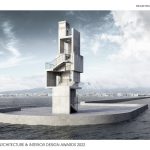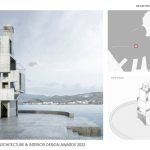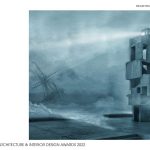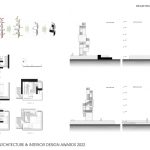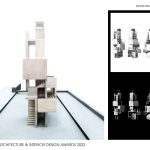Cubes Aleorion is a proposal for a lighthouse at the port of Volos, Greece, located at the innermost point of the Pagasetic Gulf and standing at the end of the 1 km long breakwater, commonly called by the locals as “kordoni” (lace or cord). Aleorion [etym. < anc. Greek: ἀλεωρή “avoidance, to avoid”] is a navigation mark to show reefs or other hazards. It is a modern interpretation of what is considered to have been the oldest known lighthouse.
Global Design & Architecture Design Awards 2022
First Award | Public Building (Concept)
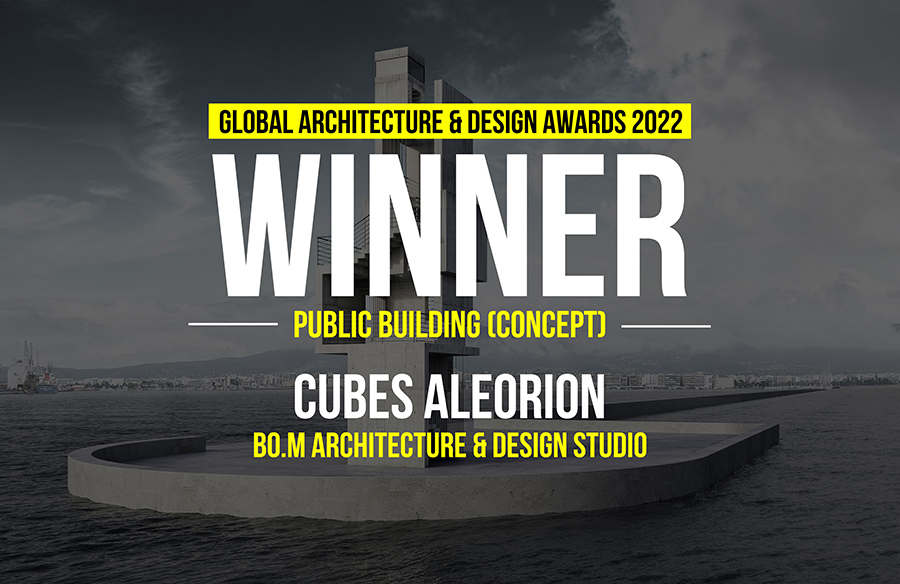
| Project Details | |
| Project Name: | Cubes Aleorion |
| Project Category: | Public Building (Concept) |
| Studio Name: | bo.M Architecture & Design Studio |
| Design Team: | Vasilis Mylonas |
| Area (total gross built area): | 68.1 m2 |
| Year: | 2021 |
| Location: | Volos, Greece |
| Consultants: | Theoklis Kanarelis, Konstantinos Manolidis |
| Photography Credits: | Vasilis Mylonas |
| Text Credits: | Vasilis Mylonas |
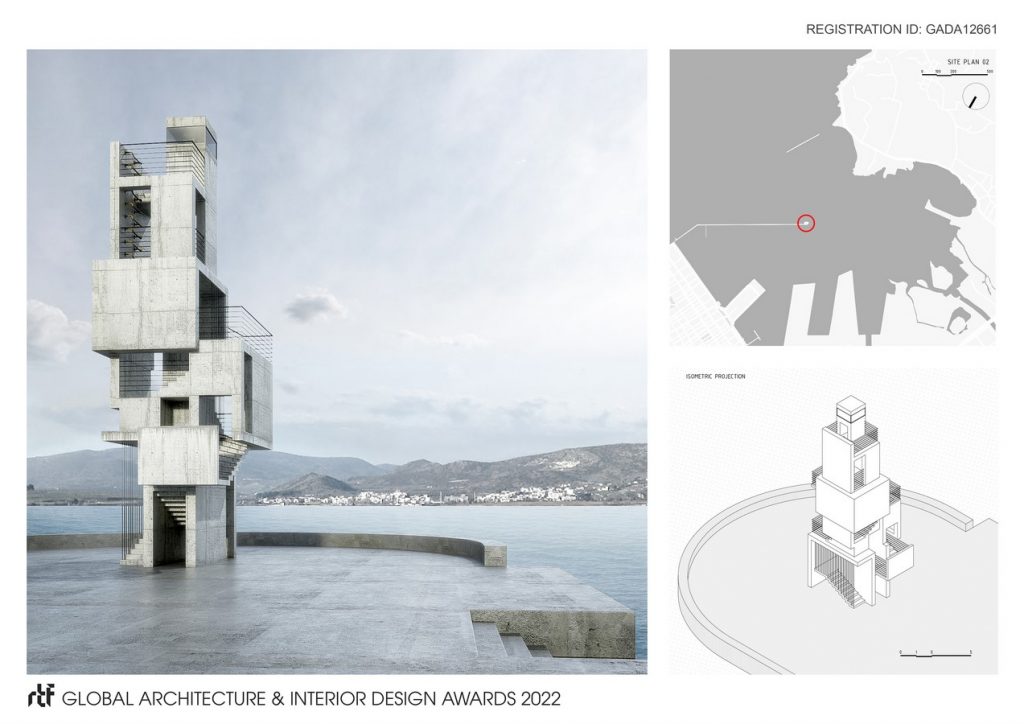
©Vasilis Mylonas
Inspiration for the Cubes Aleorion was the so-called Aleorion of Xerxes, built around 480 BC and once stood on the reef “Lefteris”, in the middle of the sea passage between Skiathos island and mount Pelion in central Greece. Remnants of the installation, parts of the structure’s base, consisting of hand shaped dolomite boulders were found on the reef. It is considered as the most ancient maritime safety structure in the world, built 250 years before the Lighthouse of Alexandria. The Dolomite stones, used for the construction of the lighthouse, had been extracted from the mines of Sepiada, in south Pelion, and each one was weighting over half a ton. The stone pieces were placed on top of each other forming a tower that functioned as a warning sign of the reef and the nearby very shallow waters, thus preventing any further sinkings.
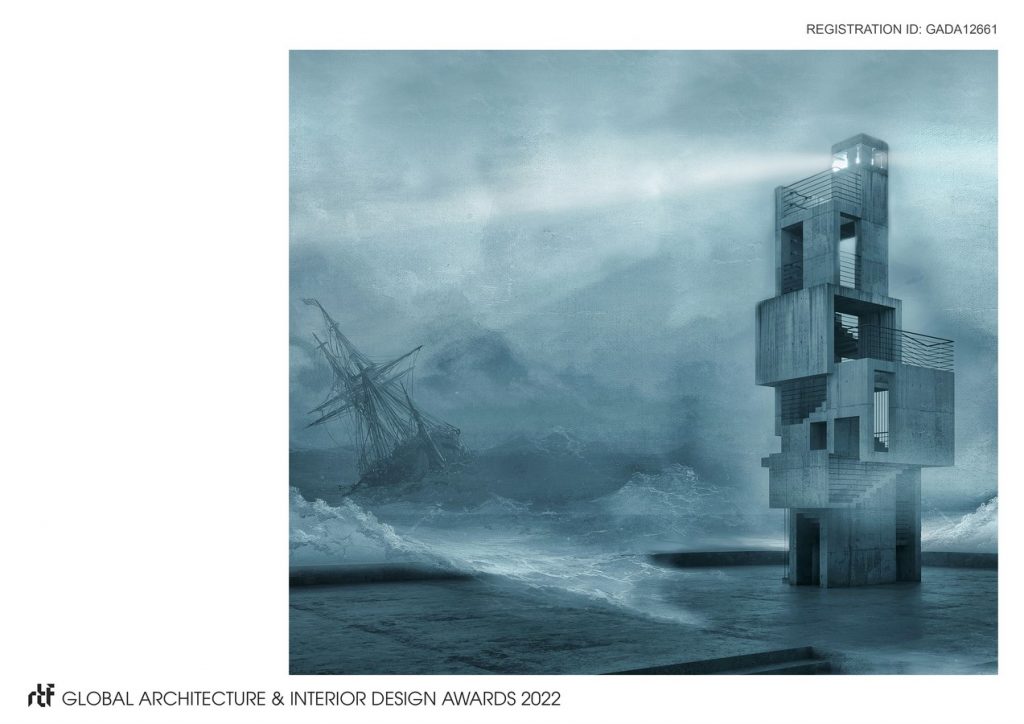
©Vasilis Mylonas
The essence of the ancient simple stacked stone structure is transcribed in a new modern tower form. Cubes Aleorion design concept was developed based on cube shaped concrete blocks placed upon each other, forming a 14.25m tower. The blocks are horizontally shifted around the main vertical axis, gradually differentiate in size and finally are cut out in various ways, creating internal voids and openings. Inside the hollow space created, the stairway to the top is being placed. The exposed all-concrete lighthouse structure echoes the materiality of the port breakwater and the urban character of the surroundings.
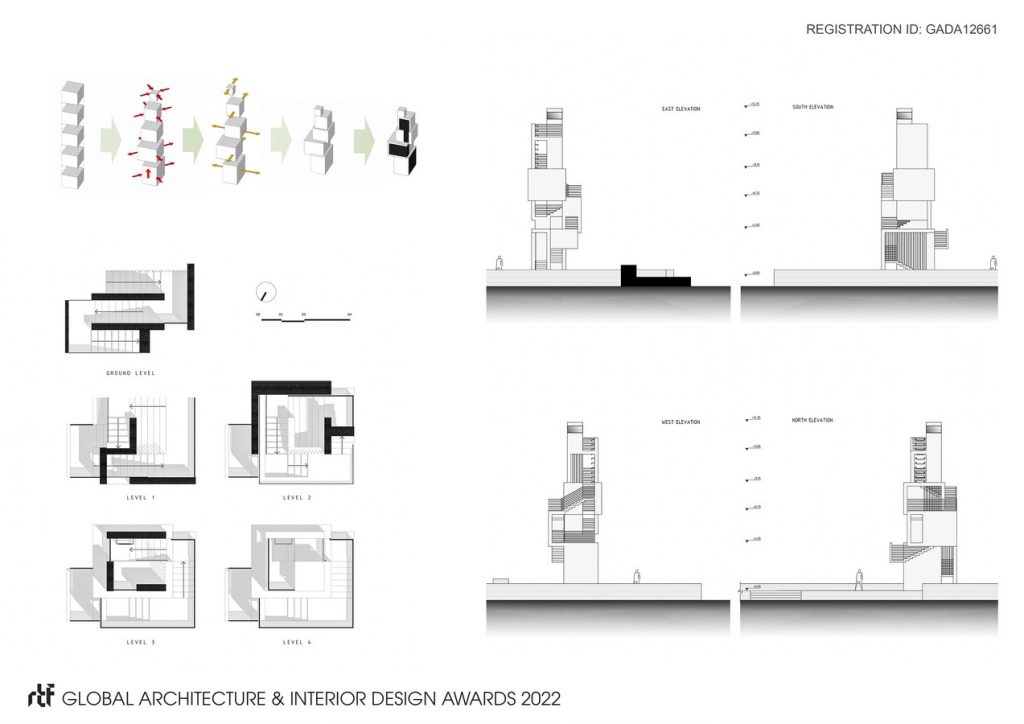
©Vasilis Mylonas
The vertical circulation, besides a necessity for technical and maintenance purposes, serves as an open invitation to visitors to explore the structure and enjoy the view. Each level frames a different viewpoint of the bay, thus creating new perspectives of the city, the port, the sea and opposite coast of the Pagasetic Gulf. The casual walk on the paved breakwater is enriched with a new end-destination, encouraging the extension of the city waterfront promenade onto the sea. A new landmark of the port and the city is born.
- ©Vasilis Mylonas
- ©Vasilis Mylonas
- ©Vasilis Mylonas
